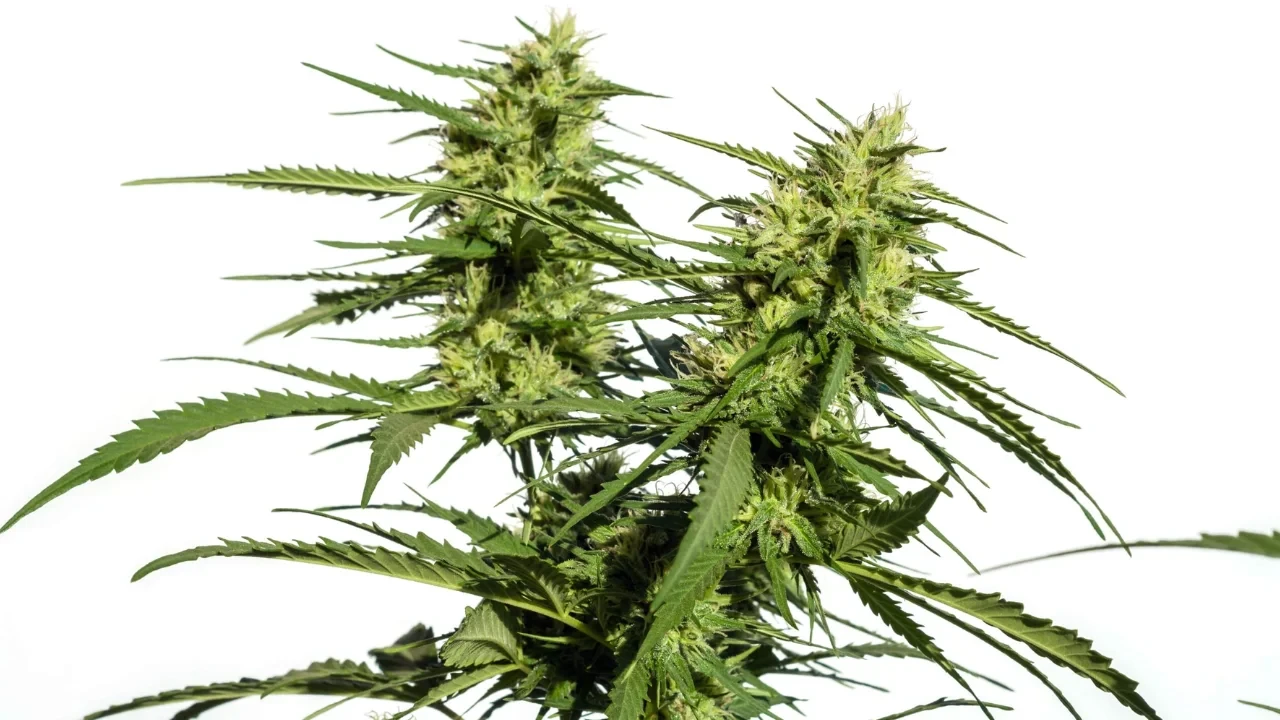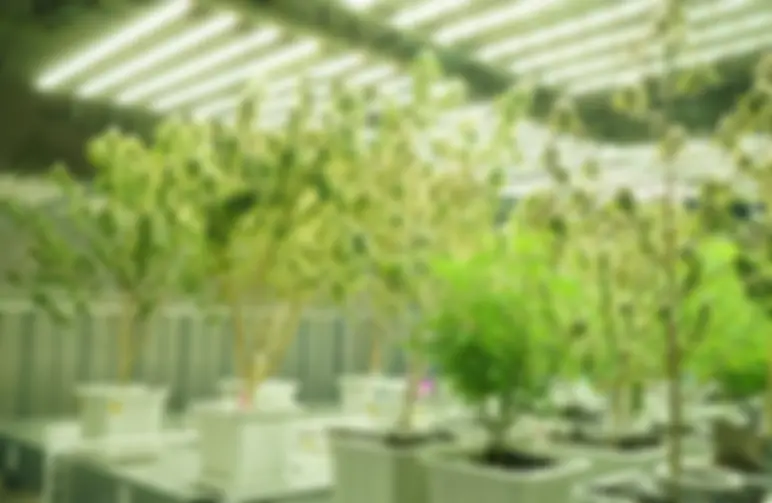Lollipopping is a trimming technique that promotes healthy bud growth at the top of your cannabis plant. This process is pretty straightforward to master and may just be the trick to get higher yields with your next cannabis crop.
If you already implement techniques like SCROG or are looking to improve your pruning know-how, this guide breaks down lollipopping and shows you how to do it successfully.
What is lollipopping cannabis plants?
Named after its unique lollipop-like shape, lollipopping is a pruning technique that removes growth from the bottom of the plant and promotes lusher canopies with light-drenched buds. It’s a way of centralizing bud production in the areas that get the best light possible.
Without applying this technique, the lower branches, leaves, and covered buds do not contribute to the health of the plant as they don’t get enough light. Instead, they leach energy from the overall plant system, impacting yield quality and size.
Contrary to how it may appear when physically removing branches from below, lollipopping actually increases your yields and creates a more universal growing system where each bud receives equal or similar light.
After all, the leaves of a cannabis plant are some of the most essential components for healthy plant growth. By removing leaves that aren’t working to produce sufficient energy, you’re directing more of that energy into producing big, high-quality, resinous buds!
Otherwise, you risk producing small “popcorn” buds on the covered lower branches, which are low in quality, potency, and flavor.
Applying lollipopping on outdoor plants
Although lollipopping is often used by indoor growers, it is certainly possible to apply lollipopping to outdoor plants. In fact, it is recommended that they do so, especially if you want to optimize your outdoor harvest.
Lollipopping vs. not: advantages of lollipopping marijuana
There are plenty of reasons to lollipop your cannabis. The key advantage is a higher yield quality and size. As energy and nutrients are directed equally across the top layers of the plant, you’ll develop healthy and dense buds throughout.
This makes buds far more consistent. What’s more, with consistent buds, harvesting becomes far simpler. You don’t have to progressively snip and wait for the lower buds to further develop.
Aside from quality issues, lollipopping also has the added benefit of making things easier for the grower. You can inspect branches for pests far more easily and gain quick access to the soil for irrigation. You can streamline production and promote faster bud development in concentrated areas.
What’s more, with the absence of bushy, crowded branches, the airflow is increased for overall plant health. As such, lollipopping is a highly recommended, tried, and tested technique that can produce a more reliable crop.
Best time to lollipop cannabis plants
Lollipopping is best done when your cannabis plant enters the flowering stage. That's because flowers tend to grow to their best potential at the top of the plant. Within the first few weeks of the flowering phase, you can trim the lowest growth to promote better development at the top.
You'll want to remove the branches below within a lollipop shape so that future energy is directed only to the healthier buds. Wait until you see signs of flowering and bud development so that you know precisely where to trim and prune.

How to lollipop cannabis plants?
1. Prepare
The first step is to prepare all the tools required for a successful job. Although some choose to lollipop younger plants by hand, you may find fine shears and scissors easier to control. Tougher branches will require more powerful shears.
Ensure your equipment is clean and sterile before beginning. Get this all ready for the start of the flowering period, and inspect your plant to make sure it’s ready for pruning.
2. Plan
Before you start cutting away, you need to plan which sections of your plant you're going to cut. Traditionally, lollipopping involves removing the entire bottom quarter of branch growth. You can, however, make any pruning decisions you'd like based on canopy growth.
The idea is to leave the most productive leaves exposed to light. Don't cut away too much, however, or you may stun your plant. If, however, you've already begun a SCROG-based training method, anything below the mesh/net is fine for removal.
The best tip for removing branches is to check how much light their leaves get. Is the leaf perpetually in the shade? Remove it. Many growers advocate for the removal of all branches below the halfway point of the plant’s size, but this is entirely your choice based on canopy coverage.
3. Cut
This last step involves actually trimming your branches. Prune, where the branch connects with the central stem. Do not cut through your primary stem in any way, as this will be disastrous. Once you've cut your chosen branches and leaves away, remove them from your growing area.
Foliage rots and attracts pests and pestilence. You can begin cutting obvious branches at the bottom of the plant before moving up and outwards to those branches just below the canopy if you’d prefer.
If this is your first time lollipopping, test the process out on just a few plants at first so that you can compare them with others in your crop.
Lollipop methods
There are two ways to lollipop.
1. Top-Down
Top-down lollipopping involves removing all the lower growth of your cannabis plant to reveal its bare stem. There are a number of methods to achieve this based on nodes and growth.
Many growers opt to remove all branches four nodes down from the top of the plant. To do this, simply hold the main stem at this 4th node and methodically remove all branches/side shoots as your hand moves down the stem to the soil/base. Take care not to damage the stem as you make your way down.
2. Bottom-up
Bottom-up lollipopping is more intuitive to your individual plant’s growth. It's less drastic and is great for beginners to start with.
You begin this process at the bottom of the plant, removing any branches that are too short to breach the canopy. This method often involves removing at least one-third of the bottom growth, but it all depends on your strain's branch growth.
As this form of lollipopping requires you to respond to your individual plant's growth, you may have to maintain and trim during later phases, too, especially if you notice some branches didn't grow as expected.
Look out for wilting leaves, as this is a sign of poor light coverage and indicates they need to be removed.

Lollipopping tips for advanced growers
Lollipopping works wonders when paired with training methods like SCROG and mainlining. This will improve the overall quality and size of your buds and yields.
Combine lollipopping with SCROG
SCROG (Screen of Green) is a training method that promotes an even canopy with spectacular top growth. It’s achieved by placing a wire/mesh screen about 20 cm above the growing medium. This promotes branches to grow up and out for optimum light coverage with a wide canopy.
This ensures that light exposure is even, providing perfect lighting conditions for each bud site and massively affecting yield potential. It also promotes aeration in the under-canopy, which can help prevent mold and mildew.
You can combine this with lollipopping by removing any lower branches that haven’t adapted to the screen or are pushed beneath another’s leaves. The end result is even greater yield potential and fine-quality buds.
This tends to work better with Sativa-dominant strains that can be stretched and maneuvered, but Indica's work too.
Combine lollipopping with mainlining
Mainlining is a popular technique that boosts yields and improves bud quality. Essentially a hybrid form of SCROG, lollipopping, and other techniques, it's an advanced process that involves manipulating the cannabis stem, removing excess leaves, and pinning down branches to improve light coverage.
The below coverage is removed, just like lollipopping, but the technique is far more intrusive. It's perfect for those with green thumbs who are already familiar with lollipopping, SCROG, and topping.





